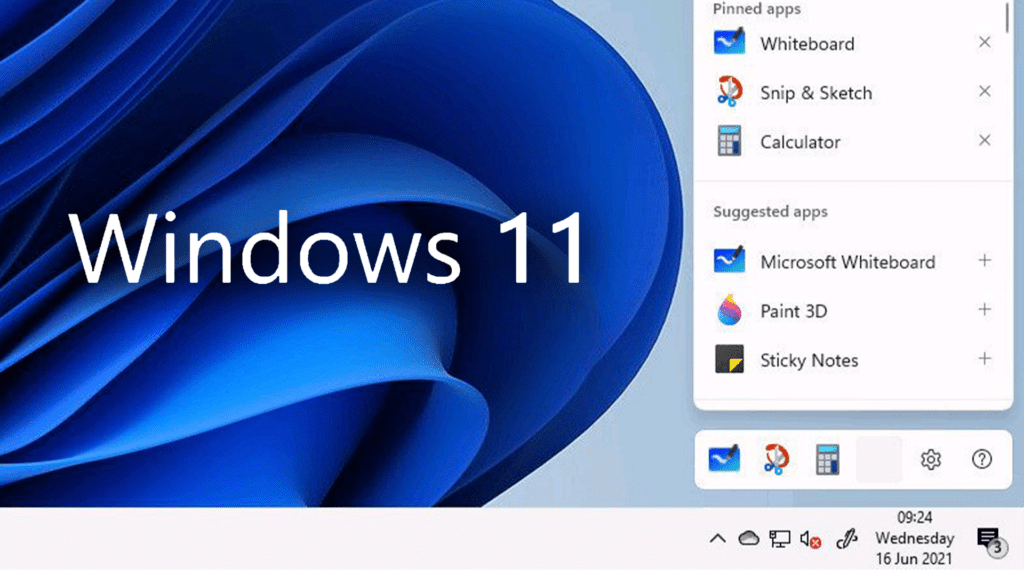Windows 11 New Feature To Start With September Patch Day

Microsoft introduced an important change in spring: function updates are no longer only available with the annual Windows version updates, but also with the optional updates and on the patch day. We’ll see what’s new from now on. Microsoft is now basically releasing important innovations and optimizations at any time, but always together with security and maintenance updates.
The new cycle provides that new features are initially launched with monthly optional updates. Then every user can choose whether he wants to try out the new features or not. On the regular patch day on the second Tuesday of the month, all the content of the optional update will also be distributed to other users. According to Microsoft, however, it is not planned to release the new functions to all users at once, but only gradually.
Committed Changes
We have already reported on the most important new features of the optional update from August. This content has now been adopted for September Patch Day. The update will start for users of the original Windows 11 version. The main innovation that all Windows 11 users will benefit from is a change in SMB compression in Windows 11. Put simply, Microsoft is now replacing the default compression algorithm with an end-to-end SMB compression feature. You can read more about this in a separate article about the new SMB compression. Other innovations concern the improvements for Microsoft Defender for Endpoint (we reported).
This is intended to better detect and intercept ransomware and advanced attacks. IT administrators can now also add languages and language-related functions remotely. Also, they can now manage voice scenarios across multiple endpoint managers. Microsoft also provides a number of bug fixes. Among other things, a bug that prevented USB printers from working properly has been fixed. In addition, the Windows team addresses problems with Windows 11 SE and Store applications as well as with Bluetooth audio headsets. Microsoft writes about the changes in the Knowledge Base:
Changes KB5016691/KB5017328
- New! IT admins can add languages and language-related features remotely. Also, they can now manage voice scenarios across multiple endpoint managers.
- New! Compresses a file regardless of its size if you have configured Server Message Block (SMB) compression.
- New! Improves Microsoft Defender for Endpoint’s ability to detect and intercept ransomware and advanced attacks.
- Addresses an issue that causes ServerAssignedConfigurations to be null in some full configuration scenarios.
- Addresses an issue affecting the automatic High Dynamic Range (HDR) feature for CASO-enabled (Cross-Adapter Resource Scan-Out) GPU drivers.
- Addresses a known issue that causes Microsoft Edge to become unresponsive when using IE mode. This issue also prevents you from interacting with a dialog.
- Addresses an issue where virtualized App-V Microsoft Office applications fail to open or stop working.
- Addresses an issue that might cause Windows Hello for Business certificate provisioning to fail under certain circumstances after you wipe a device.
- Fixes several issues related to USB printing, such as e.g.:
- A printer stops working after you restart or reinstall it
- The printer is in the wrong mode after you switch from an Internet Printing Protocol (IPP) class driver to an Independent Hardware Vendor (IHV) driver
- Two-way communication issues preventing you from accessing device features
- Addresses an issue affecting the ProjectionManager.StartProjectingAsync API. This issue causes some local authorities to be unable to connect to Miracast sinks.
- Addresses an issue that degrades BitLocker performance.
- Addresses an issue that prevents Windows 11 SE from trusting some Microsoft Store applications.
- Addresses an issue that prevents HyperVisor Code Integrity from being automatically enabled on systems with Arm64 processors.
- Addresses an issue that prevents authentication from non-Windows devices. This problem occurs when they connect to a Windows-based remote desktop and use a smart card for authentication.
- Addresses an issue that causes the Resultant Set of Policy (Rsop.msc) tool to stop working when processing 1,000 or more “File System” security settings.
- Addresses an issue that causes the Take a Test app to remove all policies related to ban enforcement when you close the app.
- Addresses an issue that causes the Settings app to stop working on server domain controllers (DCs) when accessing the Privacy > Activity History page.
- Addresses an issue that may cause certain Bluetooth audio headsets to stop playing after adjusting the progress bar. This issue affects modern systems that support Advanced Audio Distribution Profile (A2DP) offload.
- Addresses an issue that prevents devices from receiving an offer from Windows Update for the same add-on driver if that add-on driver is already installed without the base driver.
- Addresses a race condition that causes the Local Security Authority Subsystem Service (LSASS) to stop working on Active Directory domain controllers. This issue occurs when LSASS processes concurrent Lightweight Directory Access Protocol (LDAP) over Transport Layer Security (TLS) requests that cannot be decrypted. The exception code is 0xc0000409 (STATUS_STACK_BUFFER_OVERRUN).
- Addresses an issue affecting a lookup for a nonexistent security identifier (SID) from the local domain using a read-only domain controller (RODC). Search unexpectedly returns the error STATUS_TRUSTED_DOMAIN_FAILURE instead of STATUS_NONE_MAPPED or STATUS_SOME_MAPPED.
- Addresses an issue that may cause the Local Security Authority Server Service (LSASS) to expire tokens. This issue affects devices that have installed Windows updates dated June 14, 2022 or later. This issue occurs when the device is running some form of service to users (S4U) in an untrusted Windows service (TCB) running as a network service.
Digital marketing enthusiast and industry professional in Digital technologies, Technology News, Mobile phones, software, gadgets with vast experience in the tech industry, I have a keen interest in technology, News breaking.












